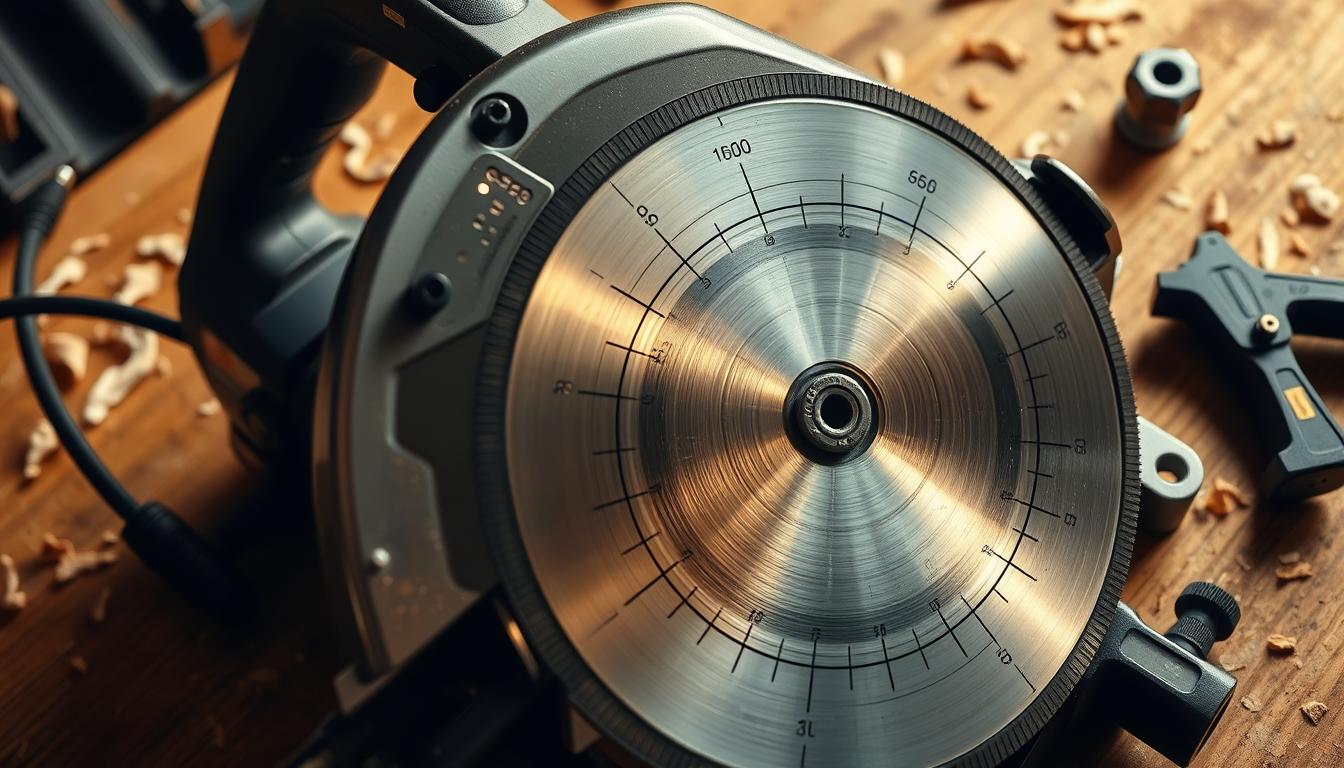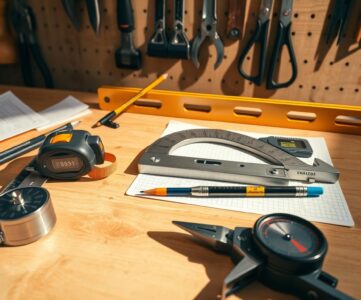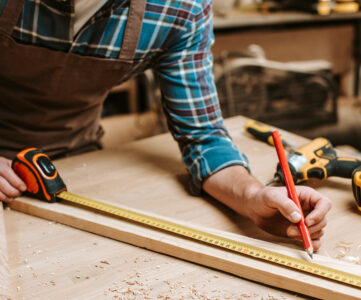Learning how to use a circular saw is key for top-notch woodworking. A circular saw guide can teach you the basics and its uses. With the right techniques, you can make precise cuts and improve your project’s quality.
A circular saw is great for many tasks, like cutting lumber or making crosscuts. To use it well, you need to know the different cutting methods. You also need to understand your saw’s parts and pick the right blade for your job.
By following a detailed circular saw guide and practicing, you can get better at making perfect cuts. Whether you’re new or experienced, learning circular saw techniques can elevate your projects.
Key Takeaways
- Mastering circular saw techniques is essential for professional-grade results
- A circular saw guide can help you get started with the basics of circular saw operation
- Choosing the right blade is crucial for achieving precise cuts
- Understanding the different components of your circular saw is vital for optimal performance
- Practicing different cutting techniques can help you improve your skills and confidence
- A comprehensive circular saw guide can help you become more proficient in using your circular saw
- Circular saw techniques can help you enhance the overall quality of your woodworking projects
Essential Safety Measures for Circular Saw Operation
When using a circular saw, safety is key. Good woodworking skills mean paying attention to safety. Knowing the right safety steps is crucial for a safe workspace.
A clean and well-lit workspace helps avoid accidents. It should have no clutter and a solid work surface. Always wear safety gear like glasses, ear protection, and a dust mask when using a circular saw.
Personal Protective Equipment Requirements
- Safety glasses with a wraparound frame
- Ear protection with a noise reduction rating (NRR) of 25 decibels or higher
- A dust mask with a filter efficiency of 95% or higher
Workspace Safety Setup
A tidy workspace is key for safe circular saw operation. It should have:
- Enough light to see clearly
- No clutter to avoid tripping
- A stable surface to keep the saw steady
Emergency Procedures and Best Practices
Having a plan for emergencies is vital. Know what to do in case of a power outage or saw kickback. By following these steps, woodworkers can stay safe and work well.
| Emergency | Procedure |
|---|---|
| Power outage | Turn off the saw and unplug it from the power source |
| Saw kickback | Release the trigger and allow the saw to come to a complete stop |
Understanding Your Circular Saw Components
To get the most out of your circular saw, it’s key to know its parts. The motor, gearbox, and blade work together for smooth cutting. When it comes to saw blade types, there are many, each for different tasks. Choosing the right blade can greatly improve your cutting.
Choosing the right saw blade types depends on the material you’re cutting. Different blades handle wood, metal, or plastic. For example, a high-tooth-count blade is great for plywood or MDF. A lower-tooth-count blade is better for ripping lumber. Knowing each saw blade type helps you make better choices and get professional results.
- Combination blades: A general-purpose blade for cutting various materials
- Ripping blades: Designed for cutting with the grain, ideal for ripping lumber
- Crosscut blades: Optimized for cutting across the grain, perfect for making precise crosscuts
By learning about your circular saw’s parts and saw blade types, you’ll become a skilled user.
Choosing the Right Blade for Your Project
Finding the right blade is key to perfect cuts. There are many blades out there, and picking the right one is important. Whether you’re woodworking or doing straight cuts, the blade you pick affects your cut’s quality.
Experts say to think about the cut you need and the material you’re cutting. For example, cutting techniques like rip cuts, crosscuts, and combination cuts need different blades. A rip blade is great for straight cuts in wood, while a crosscut blade is better for cutting across the grain.
Blade Types and Their Applications
- Rip blades: ideal for making straight cuts in wood
- Crosscut blades: better suited for cutting across the grain
- Combination blades: suitable for both rip and crosscut applications
Tooth count is also key when picking a blade. More teeth mean a smoother cut but slower speed. Fewer teeth mean faster cuts but less smoothness.
Tooth Count Considerations
Knowing about tooth count and blade type helps you pick the right blade. This ensures your cutting techniques work well. With the right blade, you’ll get precise straight cuts and professional results.
Setting Up for the Perfect Cut
To get cutting accuracy, setting up your circular saw and workspace is key. Make sure the saw is calibrated right and the blade is lined up with the fence. Woodworkers say measuring twice and cutting once is crucial to avoid mistakes.
Guides and jigs can also boost cutting accuracy. Here are some top tips to follow:
- Secure the material in place to prevent movement during cutting
- Use a push stick or other safety device to maintain control
- Keep the workspace clean and clear of debris
By following these steps and tips, you’ll be on your way to making perfect cuts with your circular saw. Always put safety first and take the time to set up your workspace right for the best results.
| Setup Step | Importance |
|---|---|
| Calibrating the saw | High |
| Aligning the blade | High |
| Securing the material | Medium |
Mastering Straight Cuts with Your Circular Saw
To get professional-looking results in woodworking, you need to master straight cuts. This skill combines proper technique, accurate measurement, and control over the saw. It takes time and practice, but with the right approach, you can improve and produce high-quality cuts.
Using the right tools and techniques is key for straight cuts. Guide rails help keep your cuts straight, and measuring and marking accurately ensures precision. Controlling the saw’s speed is also important to prevent kickback and make smooth cuts.
Guide Rail Techniques
Guide rails make your straight cuts more accurate. By attaching the rail to your material, your saw stays on track, giving you a clean cut. This method is great for long cuts or big panels.
Measuring and Marking Methods
Accurate measurement and marking are crucial for straight cuts. Use measuring tapes, squares, and marking gauges to ensure your cuts are precise. Always double-check your measurements to avoid mistakes.
Speed Control Tips
Controlling the saw’s speed is key for smooth cuts. Adjusting the speed based on the material you’re cutting reduces kickback and improves quality. Understanding how to adjust the speed is important for different materials and conditions.
By mastering these techniques, you can make high-quality straight cuts. This will elevate your woodworking projects. Always follow safety guidelines and use proper saw operation techniques for a safe and successful cutting experience.
| Technique | Description |
|---|---|
| Guide Rail | Attaches to material to ensure straight cuts |
| Measuring and Marking | Uses measuring tapes, squares, and marking gauges for accurate cuts |
| Speed Control | Adjusts saw speed to match material type and cutting conditions |
Advanced Cutting Techniques
Woodworkers who want to improve can learn advanced cutting techniques. These need knowledge of cutting methods and saw blade types. With the right blade and practice, you can do bevel cuts, plunge cuts, and make dados and grooves.
When doing advanced cuts, safety is key. Use the right saw blade for the task and know the cutting methods. This keeps you safe and ensures precise cuts.
Making Bevel Cuts Easy
Bevel cuts can be tricky, but with the right tools and technique, they’re easy. Set your saw’s angle to the desired bevel. Then, make the cut with a smooth motion. Use a high-quality saw blade for the best results.
Plunge Cutting Safely
Plunge cutting needs finesse, but it’s safe with the right method. Set your saw’s depth and make the cut slowly. Always use a saw blade made for plunge cutting to stay safe.
Creating Dados and Grooves
To make dados and grooves, you need to know cutting techniques and saw blade types. Use a top-notch saw blade for these tasks and follow safety rules. With practice, you’ll master this skill and boost your woodworking.
Troubleshooting Common Cutting Problems
Even with the best tools and methods, cutting problems can still happen. To keep your circular saw guide working well, it’s key to spot and fix common issues. Issues like uneven cuts, kickback, and blade binding can be avoided with the right steps.
A circular saw guide helps by giving a steady point for the saw. But if it’s not set right, cuts won’t be accurate. Make sure the guide is tightly fixed to the saw and the material.
- Uneven cuts: Check the blade for damage or wear, and ensure the material is properly supported.
- Kickback: Maintain a firm grip on the saw, and keep loose clothing or long hair tied back.
- Blade binding: Use the correct blade type and size for the material being cut, and keep the blade clean and well-maintained.
By using these tips and a circular saw guide for better cutting accuracy, your projects will come out right. Always follow safety rules and best practices when using a circular saw.
| Problem | Solution |
|---|---|
| Uneven cuts | Check blade for damage or wear, ensure material is properly supported |
| Kickback | Maintain firm grip on saw, keep loose clothing or long hair tied back |
| Blade binding | Use correct blade type and size, keep blade clean and well-maintained |
Maintaining Your Circular Saw for Optimal Performance
Keeping your circular saw in good shape is key to its longevity and performance. As you get better at woodworking, a well-maintained saw is crucial. It helps you achieve professional results. Regular cleaning and calibration are important for this.
Start by cleaning your saw often. Get rid of dust and debris, focusing on the blade and motor. This prevents damage and keeps the saw running smoothly. Then, calibrate your saw for accurate cuts. You might need to adjust the blade or check the saw’s alignment.
Cleaning Procedures
- Remove dust and debris from the blade and motor
- Check and clean the saw’s air vents
- Use a soft brush to clean hard-to-reach areas
Calibration Steps
- Check the blade for proper alignment
- Adjust the saw’s calibration screws as needed
- Test the saw to ensure accurate cuts
By following these easy steps, you can keep your circular saw in great shape. Always follow the manufacturer’s advice and work on your woodworking skills. With proper care and use, you’ll be ready for any project.
Conclusion: Becoming a Circular Saw Expert
Mastering the circular saw takes dedication, practice, and the right knowledge. This guide has shown you how to improve your skills. Now, you can make perfect cuts every time.
This article has covered safety, basic cuts, and advanced techniques. It’s all about getting to know your tool, picking the right blade, and keeping it in good shape.
Keep learning, trying new things, and talking with other woodworkers. With what you’ve learned, you’re ready to take on many projects. Happy cutting!






